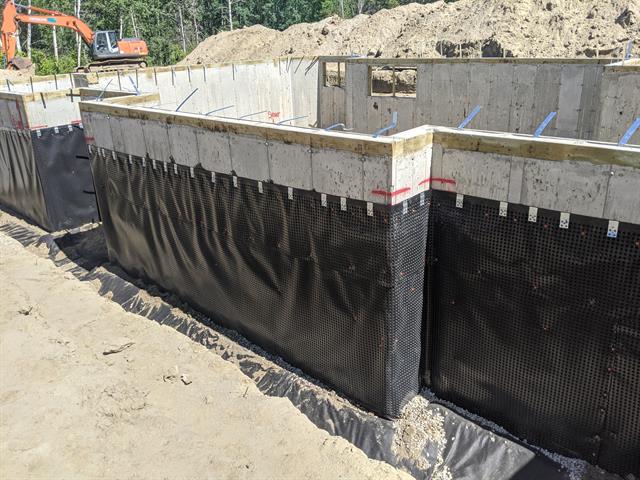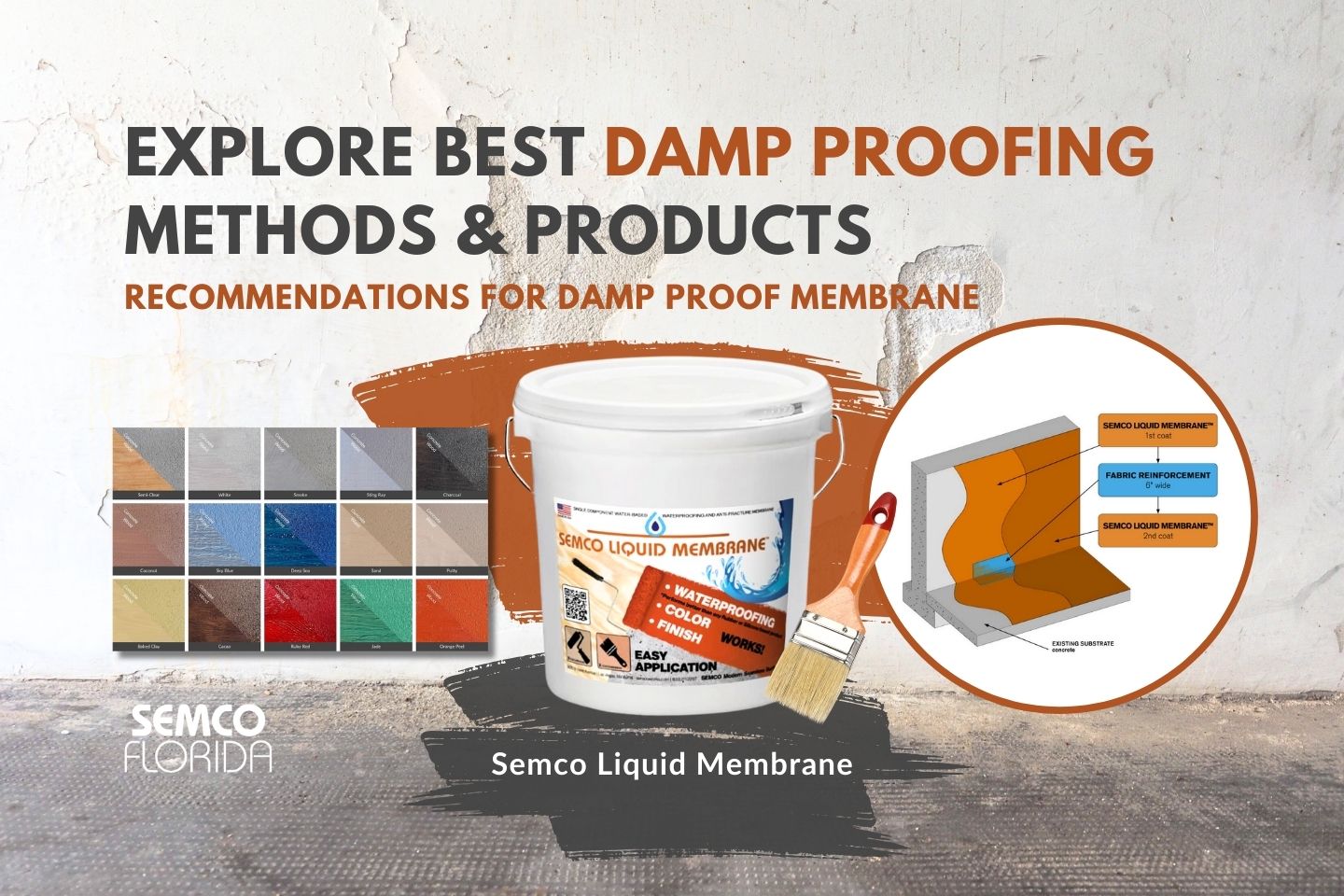Exploring the Various Strategies and Solutions for Effective Damp Proofing
Dampness in structures presents substantial obstacles to both architectural integrity and interior air quality. Numerous methods and remedies have actually arised to battle this pervasive concern. From traditional damp-proof membranes to cutting-edge chemical therapies, each technique provides special benefits. Comprehending these choices is important for reliable wetness control. Nevertheless, picking the ideal service depends upon specific structure conditions and requirements, prompting more expedition into one of the most reliable damp proofing methods offered.
Recognizing the Root Causes Of Moisture
Moisture can arise from numerous sources, understanding these reasons is crucial for reliable remediation. Frequently, dampness stems from 3 primary resources: climbing damp, permeating damp, and condensation. Rising damp occurs when groundwater travels upwards via porous products, such as brick or rock, often as a result of an absence of a reliable barrier (damp removal newcastle). Passing through moist is typically triggered by exterior variables, consisting of roofing leaks, malfunctioning seamless gutters, or harmed wall surfaces, permitting water to penetrate a residential or commercial property. Condensation, on the other hand, arises from excess dampness airborne, usually intensified by bad ventilation and temperature level distinctions, leading to water droplets developing on surfaces. Determining these underlying problems is crucial, as each kind of wetness requires a customized strategy for removal. Appropriate evaluation aids in establishing one of the most effective solutions, ultimately guarding the structural integrity of a building and enhancing interior air top quality
Standard Damp-Proof Membranes

Chemical Damp-Proofing Solutions
Chemical damp-proofing solutions use an innovative method to avoid dampness breach in structures. These techniques generally include the application of fluid chemicals that permeate stonework and develop an obstacle against rising wet. Frequently used chemicals include silanes, siloxanes, and various other water-repellent representatives that respond with surface area materials to develop a hydrophobic layer.The application process usually requires exploration openings into the walls, infusing the chemical remedy, and enabling it to heal. This approach is specifically helpful for older structures where typical damp-proof membranes may be not practical. Chemical damp-proofing can be much less turbulent and extra cost-effective than comprehensive renovation projects.While reliable, these services depend on correct application and ecological problems for peak performance. damp specialist newcastle. Routine maintenance and monitoring are vital to assure the longevity of the damp-proofing therapy. On the whole, chemical damp-proofing represents a flexible choice for guarding structures against moisture-related damage
Tooth Cavity Wall Building And Construction Strategies
Cavity wall surface building methods supply various benefits, especially in dampness control and power performance. By including an air void between 2 layers of masonry, these wall surfaces effectively alleviate water access while improving insulation. This mix not just protects frameworks from wetness yet additionally contributes to lowered power consumption.
Advantages of Tooth Cavity Walls
When thinking about effective damp proofing techniques, the advantages of tooth cavity walls stand apart prominently. Tooth cavity walls consist of 2 separate layers, creating an air space that properly lowers dampness infiltration. This style minimizes the risk of wetness, as the external wall surface works as an obstacle against rainfall and water access. Additionally, cavity wall surfaces enhance thermal insulation, which adds to energy efficiency by reducing warm loss. They likewise provide audio insulation, assisting to create a quieter interior setting. In addition, the air space enables air flow, which helps in dampness control and reduces the likelihood of mold growth. These advantages not only improve the overall comfort of a structure however also add to its long life and architectural stability.
Moisture Control Strategies
Efficient dampness control strategies are critical in dental caries wall surface construction to guarantee long-term protection against dampness. One primary approach entails the incorporation of weep holes, which facilitate water drain from the cavity, preventing build-up. Furthermore, making use of breathable membranes can assist manage wetness degrees while allowing trapped vapor to get away. Proper positioning of insulation is also important, as it ought to not obstruct water drainage paths. Ensuring that the external fallen leaves of the dental caries wall are built with water-resistant materials enhances general toughness. Normal maintenance checks are necessary to identify any type of obstructions or damage early, guarding the structure's honesty. Eventually, a combination of these methods creates a durable defense against moisture intrusion in dental caries wall surfaces.
Insulation and Energy Efficiency
Insulation plays an important function in improving power performance within dental caries wall construction. By including protecting products, these walls produce a thermal obstacle that reduces heat loss and reduces power consumption. Efficient insulation not just aids maintain a stable indoor temperature however also mitigates the risk of wetness, as it stops condensation within the wall surface tooth cavity. Numerous strategies, such as making use of inflexible foam boards or mineral wool, can be used to accomplish excellent insulation efficiency. In addition, appropriate setup is vital to ensure that gaps and spaces are decreased, which can otherwise jeopardize energy efficiency. Eventually, a well-insulated dental caries wall surface contributes significantly to overall sustainability and reduces home heating and cooling expenses for property owners.
External Damp Proofing Techniques
Outside damp proofing techniques are important for protecting frameworks from dampness seepage. 2 efficient techniques include the application of water resistant membrane layers and the installment of French drains. These remedies assist alleviate water buildup and maintain the honesty of structures.
Waterproof Membrane Application
While different methods exist for protecting against dampness ingress, the application of water resistant membranes stays an extremely reliable external moist proofing technique. These membrane layers are normally made from materials such as polyethylene, rubber, or modified bitumen, supplying a durable barrier against water infiltration. The installment procedure involves using the membrane layer to the outside surface areas of foundations or wall surfaces, making certain complete coverage to stop leakages. Correct adhesion and sealing at joints are crucial to taking full advantage of performance. Waterproof membrane layers can be used in various forms, including liquid layers and sheet membrane layers, enabling adaptability based upon the details requirements of the structure. This method not just safeguards buildings from moisture but likewise enhances their long life and structural honesty.
French Drain Installation
One efficient technique for managing groundwater and avoiding wetness buildup around a structure's foundation is the setup of a French drainpipe. This drainage system consists of a trench loaded with crushed rock and a perforated pipe that reroutes surface water far from the structure. Correct setup calls for cautious preparation, ensuring that the drain inclines far from the structure to help with perfect water circulation. In addition, the location of the drainpipe is essential; it should be placed in areas susceptible to pooling or excess moisture. Regular maintenance, consisting of clearing up debris from the gravel and ensuring the pipeline remains unobstructed, is necessary for long-term effectiveness. Ultimately, a well-installed French drain can substantially lower the risk of water-related problems in foundations and cellars.
Inside Waterproofing Approaches
Inside waterproofing strategies are essential for protecting a structure's inside from moisture infiltration and possible water damage. These techniques commonly involve the application of customized materials and techniques designed to produce a dampness obstacle within the framework. One usual strategy is making use of water resistant finishes or sealants on walls and floorings, which protect against dampness from permeating surfaces.Additionally, setting up indoor drain systems, such as sump pumps, can properly manage water accumulation in cellars and crawl rooms. Another approach involves making use of vapor obstacles, which are set up to inhibit dampness movement from the ground into living spaces.Moreover, addressing any cracks or voids in walls or structures with appropriate sealants assures a detailed defense against water breach. By implementing these indoor waterproofing methods, homeowner can substantially decrease the danger of mold growth, architectural damages, and various other moisture-related problems. Correct execution of these techniques is vital for lasting defense and building stability.
Normal Upkeep and Assessment Practices
Normal upkeep and examination practices are vital for assuring the lasting performance of wet proofing solutions in any kind of structure. Routine checks allow property owners to identify very early indicators of moisture invasion, such as peeling off paint, mold and mildew growth, and mildewy odors. These signs can signify underlying issues that need instant attention.Inspections must be carried out at the very least yearly, concentrating on prone locations like basements, crawl areas, and exterior walls. Throughout these assessments, residential or commercial property proprietors ought to take a look at sealers, drainage systems, and ventilation to verify they function correctly.Additionally, preserving downspouts and rain gutters is important, as stopped up systems can cause water accumulation near the structure. Applying a regular maintenance routine, in addition to prompt repair services, can significantly extend the life expectancy of wet proofing actions and protect the structural integrity of the structure. Aggressive measures eventually contribute click here to the total health and wellness and safety and security of the living atmosphere.
Frequently Asked Inquiries
How Much Time Does Damp Proofing Normally Last?
The duration of wet proofing effectiveness differs, commonly lasting in between 20 to 50 years. Factors such as application quality, environmental conditions, and upkeep techniques greatly influence the long life of the moist proofing therapy.

Can I Damp Proof My Home Myself?
The private pondered the expediency of DIY damp proofing. With proper study and the ideal products, it is feasible. They likewise recognized the importance of expert assistance to guarantee durable effectiveness and avoid future problems.
What Are the Indications of Ineffective Damp Proofing?
Indications of ineffective wet proofing include relentless moldy odors, noticeable mold and mildew growth, peeling paint, wet spots on wall surfaces, and wood decay - mould treatment newcastle. Property owners must attend to these issues promptly to stop additional damage and wellness issues
Does Damp Proofing Affect Indoor Air Top Quality?

Just How Much Does Expert Damp Proofing Cost?
Specialist damp proofing prices differ considerably, usually ranging from $1,000 to $5,000 depending upon the residential property's size, the degree of the damp concern, and chosen methods. Each scenario requires a tailored evaluation for precise pricing. Generally, moisture originates from three main sources: increasing wet, permeating damp, and condensation. When thinking about reliable damp proofing methods, the benefits of cavity wall surfaces stand out prominently. Exterior wet proofing approaches are important for safeguarding structures from dampness infiltration. While different methods exist for stopping moisture ingress, the application of water resistant membrane layers continues to be a highly efficient outside damp proofing strategy. Indicators of inefficient damp proofing consist of persistent mildewy odors, noticeable mold growth, peeling off paint, moist spots on walls, and wood degeneration.